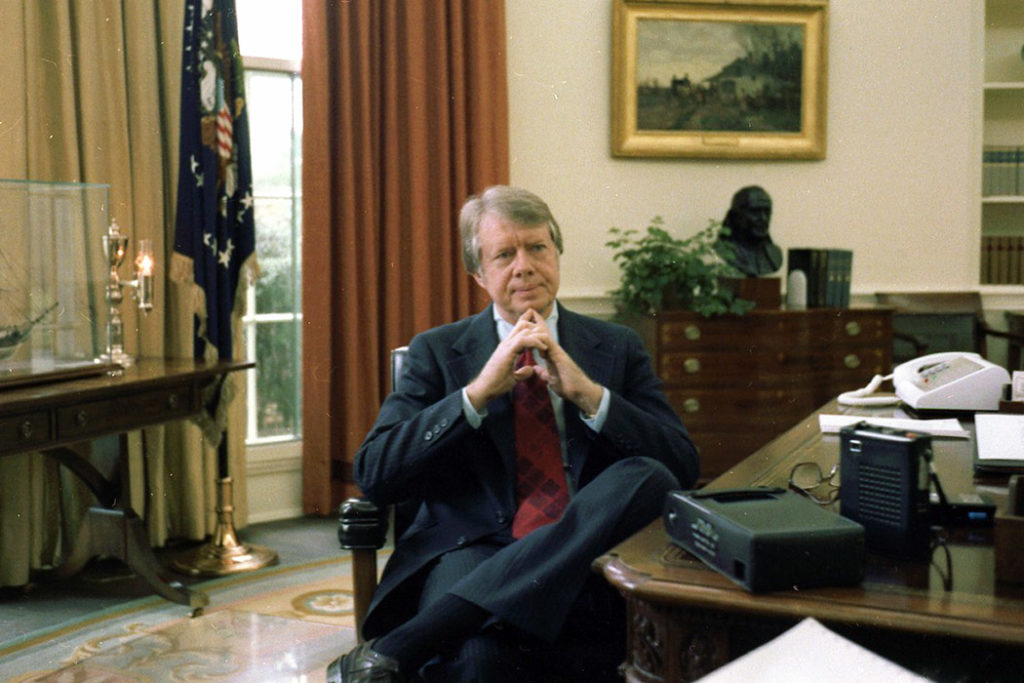The 1970s May Finally Be Over

For a very long time, I’ve been frustrated with how even liberal economists are basically living with the trauma of the late 70s and can’t think beyond the idea of INFLATION IS EVILLLLLLL!!! This is not to dismiss the very real problems of inflation during those years, but everything else in the world has moved far beyond the Carter years except for this single issue.
Thankfully–and thanks to the many labor/left/liberal economic writers and thinkers who have done so much work to push back–we may be through this particular malaise, with the rise of full employment as a serious policy proposal again.
Mr. Biden has made clear that his administration will focus on workers and has chosen top officials with a job market focus. He has tapped Janet L. Yellen, a labor economist and the former Fed chair, as his Treasury secretary and Marty Walsh, a former union leader, as his Labor secretary.
In the past, lawmakers and Fed officials tended to preach allegiance to full employment — the lowest jobless rate an economy can sustain without stoking high inflation or other instabilities — while pulling back fiscal and monetary support before hitting that target as they worried that a more patient approach would cause price spikes and other problems.
That timidity appears less likely to rear its head this time around.
Mr. Biden is set to take office as Democrats control the House and Senate and at a time when many politicians have become less worried about the government taking on debt thanks to historically low borrowing costs. And the Fed, which has a track record of lifting interest rates as unemployment falls and as Congress spends more than it collects in taxes, has committed to greater patience this time around.
“Economic research confirms that with conditions like the crisis today, especially with such low interest rates, taking immediate action — even with deficit finance — is going to help the economy, long-term and short-term,” Mr. Biden said at a news conference on Jan. 8, highlighting that quick action would “reduce scarring in the work force.”
Jerome H. Powell, the Fed chair, said on Thursday that his institution is tightly focused on restoring rock-bottom unemployment rates.
Again, this is very, very different than a mere decade ago.
Such a government-aided rebound would come in stark contrast to what happened during the 2007 to 2009 recession. Back then, Congress’s biggest package to counter the fallout of the downturn was the $800 billion American Recovery and Reinvestment Act, passed in 2009. It was exhausted long before the unemployment rate finally dipped below 5 percent, in early 2016.
At the time, concern over the deficit helped to stem more aggressive fiscal policy responses. And concerns about economic overheating pushed the Fed to begin lifting interest rates — albeit very slowly — in late 2015. As the unemployment rate dropped, central bankers worried that wage and price inflation might wait around the corner and were eager to return policy to a more “normal” setting.
But economic thinking has undergone a sea change since then. Fiscal authorities have become more confident running up the public debt at a time of very low interest rates, when it isn’t so costly to do so.
Biden has always been at the center of the party instead of an ideological leader of any stripe. That can certainly have its down side. But when activists are pushing the party left, it can also have a tremendously positive effect. The only really awful Biden appointee for workers so far is Gina Raimondo, and she’ll be at Commerce where she can’t do too much damage. And while I am not naive and am sure Rahm Emanuel and Larry Summers still have access to power, they and their descendants are not who is being appointed to key positions, including at Treasury.
The bigger issue here though is that we can’t manage the economy in a position of PTSD from 1978 forever. There are ways to manage inflation. And there are ways to achieve full employment. The focus should be on the latter rather than the chimera of the former.


